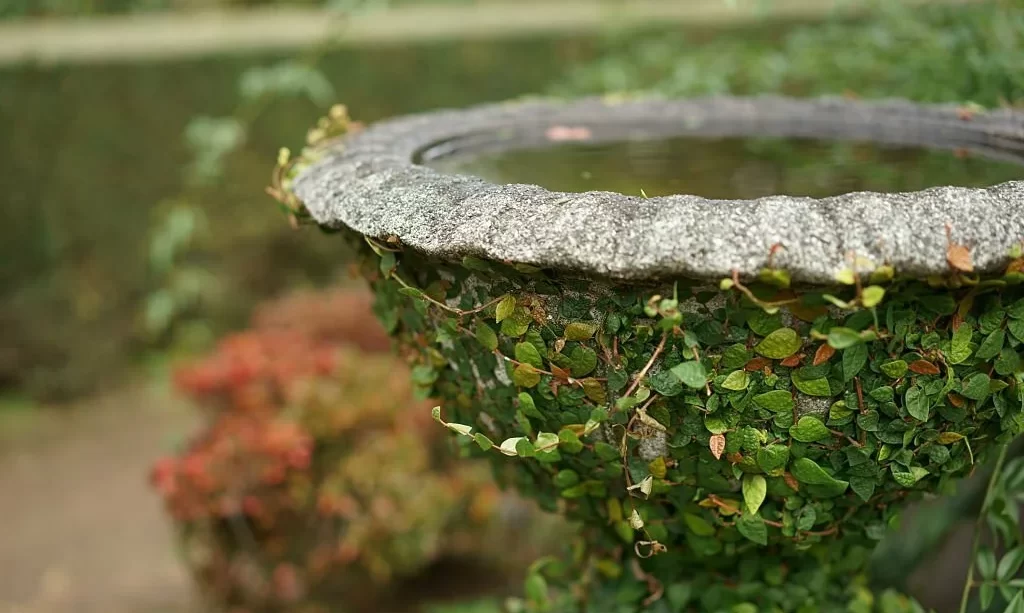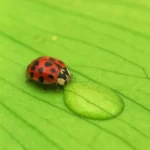A shallow bird bath can be more than just a source of refreshment for feathered visitors in your garden; it can also double as a charming mini garden oasis. Planting a shallow bird bath is a creative way to enhance your outdoor space, providing both a water feature and a haven for a variety of plants. In this guide, we’ll explore how to transform your bird bath into a miniature garden that not only adds beauty to your landscape but also creates a welcoming environment for birds and other wildlife. Let’s dive into the wonderful world of bird bath gardens.
Choosing the Right Plants
When it comes to selecting plants for your shallow bird bath garden, it’s essential to consider species that are well-suited to the unique conditions of a bird bath, such as limited soil depth and potential water exposure. Here are some plant types that work beautifully in this setting:
- Succulents: Succulents, with their low water requirements and unique textures, are perfect for shallow bird baths. Varieties like hens-and-chicks (Sempervivum) and stonecrop (Sedum) thrive in these conditions.
- Herbs: Herbs like thyme, oregano, and mint are excellent choices. Their aromatic leaves can add a pleasant fragrance to your garden, and they’re generally low-maintenance.
- Annual Flowers: Consider annuals like marigolds, petunias, or impatiens for a burst of color. Annuals are versatile and can be changed seasonally to keep your bird bath garden fresh.
- Aquatic Plants (Optional): If you’re feeling adventurous, you can include aquatic plants like dwarf water lilies or water hyacinths. However, this will require more extensive maintenance and care.
It’s crucial to research the specific requirements of the plants you choose to ensure they are suitable for the shallow, confined environment of a bird bath.
Planting Techniques
Planting in a shallow bird bath involves specific techniques to create a thriving mini garden. Here’s how to get started:
- Cleaning and Preparing the Bird Bath: Begin by thoroughly cleaning the bird bath, removing any debris, algae, or residue. Rinse it with clean water and let it dry.
- Adding a Suitable Potting Mix: Use a well-draining potting mix designed for the types of plants you’ve selected. Fill the bird bath about two-thirds full with this mix.
- Planting Arrangement: Before planting, arrange your chosen plants to create an appealing design. Consider the plant’s mature size and growth habits to ensure they fit well together.
- Planting Depth: Plant your selections at a depth suitable for each type, making sure they are secure in the soil. Succulents, for example, can be planted shallower than herbs or annuals.
By carefully choosing the right plants and employing proper planting techniques, you can create a beautiful and sustainable mini garden in your shallow bird bath, offering a welcoming space for both nature and aesthetics in your outdoor sanctuary.
Plant Selection and Arrangement
Selecting the right plants is just the beginning; arranging them effectively in your shallow bird bath garden is crucial for creating an attractive display. Here’s how to make the most of your plant selection:
- Mix of Textures and Colors: Create visual interest by combining plants with diverse leaf shapes, colors, and textures. Succulents, with their unique rosettes and fleshy leaves, can be nestled among herbs or annual flowers for a striking contrast.
- Thriller, Filler, and Spiller: Follow the classic “thriller, filler, spiller” approach. Choose one taller centerpiece plant (the thriller), surround it with compact or bushy plants (the filler), and allow some trailing or cascading varieties (the spiller) to drape over the edges of the bird bath.
- Consider Seasonal Changes: If you plan to switch out plants seasonally, think ahead about how different combinations will look throughout the year. Annual flowers can provide vibrant colors in spring and summer, while succulents offer a more evergreen appearance.
- Wildlife-Friendly Plants: Opt for plants that attract birds and pollinators. Herbs like thyme and oregano produce flowers that are favored by bees, while annuals provide nectar sources.
Maintenance and Care
Maintaining your shallow bird bath garden ensures it remains a delightful and inviting space for both plants and wildlife. Here’s how to keep it thriving:
- Watering: Unlike traditional gardens, your bird bath garden will likely require more frequent watering due to the shallow soil. Check the moisture level regularly, especially during hot weather, and water as needed to keep the soil consistently moist but not waterlogged.
- Fertilization: Apply a balanced, slow-release fertilizer as needed. Be mindful of the specific requirements of the plant types you’ve chosen, as some may need more frequent feeding than others.
- Pruning and Deadheading: Trim back overgrown or leggy growth, and deadhead spent flowers to encourage new blooms. Herbs like thyme can benefit from light pruning to maintain their shape.
- Pest and Disease Control: Keep an eye out for pests and diseases, especially if your bird bath garden includes herbs or annuals. Natural remedies or organic controls can help manage issues without harming wildlife.
- Seasonal Adjustments: Depending on your climate, you may need to make seasonal adjustments. Protect your bird bath garden from frost by covering it or moving it indoors during the winter in colder regions.
- Observation: Take time to observe the bird bath garden regularly. Watch for the wildlife it attracts, enjoy the changing colors and textures, and make adjustments as needed to maintain its beauty and functionality.
By paying attention to the arrangement of your chosen plants and providing proper maintenance and care, your shallow bird bath garden can become a vibrant, ever-evolving focal point in your garden. It will not only please the eye but also offer a refreshing respite for birds and other creatures that visit your outdoor sanctuary.
Wildlife Attraction
One of the most rewarding aspects of creating a mini garden in your shallow bird bath is the wildlife it can attract. Here’s how your bird bath garden can become a hub for nature:
- Birds: The primary beneficiaries of a bird bath, your garden will invite feathered friends for a drink, a splash, and perhaps even a quick nibble on nearby insects. Birds are essential for pest control and add delightful sights and sounds to your garden.
- Bees and Butterflies: Pollinators are drawn to nectar-rich flowers, and by planting suitable varieties, you can provide essential nourishment for bees, butterflies, and other insects.
- Beneficial Insects: Herbs and other plants can attract beneficial insects, like ladybugs and lacewings, which help control garden pests.
- Biodiversity: Your bird bath garden contributes to the overall biodiversity of your garden, supporting a healthy ecosystem that includes various wildlife species.
Frequently Asked Questions
Can I use any bird bath for this purpose?
It’s best to use a shallow bird bath, typically made of ceramic, stone, or concrete. These materials retain moisture and provide an ideal planting environment.
Do I need to change the soil regularly?
You may need to refresh the soil and amend it with nutrients every few years, depending on the growth habits of your chosen plants.
How do I prevent algae growth in the water?
To prevent algae growth, ensure the water is not stagnant. Regularly replenish it to keep it fresh. You can also add small floating plants, like duckweed, which can help shade the water and reduce algae growth.
What do I do if my bird bath garden becomes overcrowded?
If the plants become too crowded, consider thinning or relocating them to maintain a balanced and healthy garden.
Conclusion
Transforming your shallow bird bath into a mini garden is a delightful way to enhance your outdoor space while providing a welcoming oasis for wildlife. By choosing the right plants, arranging them thoughtfully, and tending to their needs, you create a beautiful and functional addition to your garden. Your bird bath garden becomes not only an aesthetic centerpiece but also a hub of activity, where birds, pollinators, and other creatures converge, adding a touch of wild beauty to your outdoor sanctuary.



